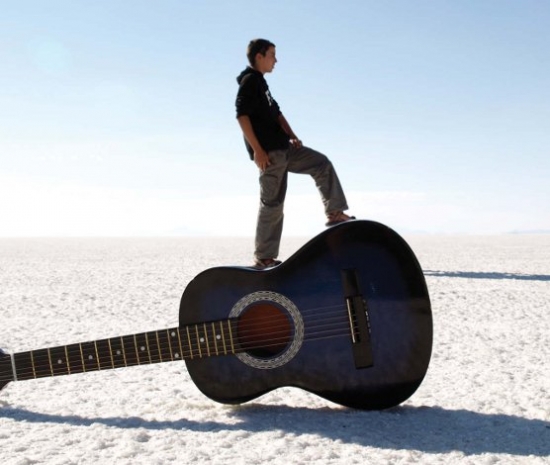
Our visit to Bolivia started out as a tag-on to a Peru trip and turned out to be the highlight of our trip. Already at the planning stage I contemplated canceling the entire trip due to the fact that all the sights we wished to see were 3,600 meters above sea level and some places as high as 5,300 meters. As one goes higher the air gets thinner which makes it more difficult to get oxygen into the blood. I worried that if we went we would not be able to cope with this problem and would have to abort the trip at an early stage. Fortunately, allowing one or two extra "rest" days as we ascended, in order to acclimatize, prevented any problems and allowed us to carry out all our activities as planned. Our "group" consisted of myself, my wife, my daughter of 22 and my son of 15.
We started our trip in Bolivia by crossing from Peru and driving to La Paz by bus. For me, the preparation for the trip was half the fun as I had seen pictures and read as much as possible beforehand. However, on reaching the plateau rim above La Paz, we were, nonetheless, overwhelmed on seeing the city far below us curled around the inside of an enormous crater with arms of houses creeping up the almost vertical sides of the crater walls and a snow-covered mountain forming a dramatic backdrop.
La Paz is a city of over a million people but unlike most cities where wealthier people live higher up in order to enjoy better views and better air, in La Paz, the rich live as low as possible and the poor have a better view but less oxygen and even colder weather. The bus dropped us off in the middle of the mad house that is the center of the "Indian" half of the city. The streets and pavements were jammed with people, cars, buses, shops, stalls and hawkers, all crowded together in narrow streets which wind their way up the steep sides of the crater. I couldn't take my eyes off the women, especially the older ones. Deeply wrinkled faces crowned with a wide variety of fascinating hats. Short and chubby, the width of their hips accentuated by half a dozen or more petticoats worn under a colorful skirt. Beautiful. We booked into a new hotel in the middle of all the action, $30 a night for a double room including breakfast. It was already evening and we had been traveling since early morning but we had a long list of the best restaurants in La Paz that needed to be dealt with, so we caught a taxi to see how the rich live and eat. $10 to $15 gets you a ticket into gastronomic heaven with service to match.
We spent the next two days seeing the museums, churches, historical buildings and wandering around the psychedelic markets and streets. Stalls in the Witches' Market sell potions for any and every ailment. Wild animal skins, dried frogs or lama fetuses are sold as good luck charms. They don't seem to work. Bolivia is the poorest country in South America and the majority of the people live far below the poverty line. Hardly anyone speaks English but signs in Hebrew are everywhere, and it's obvious that after Spanish and Ketshwa, Hebrew is the next most important language, if not in the entire world, then at least in La Paz.
In the early evening we caught a night bus, which 14 bone-shaking hours later dropped us off in a very small isolated town, Uyuni, on the edge of the Salar de Uyuni, the biggest, or is it the highest at 4000 meters, salt flats in the world. We joined up with a young Israeli couple and booked our three day jeep trip with the "best and cheapest" touring company in Uyuni. The six of us, plus the driver and a cook squeezed into the jeep, which had previously been packed by the driver. Some of you may remember the terrible accident that happened when two jeeps collided here some months ago and the jeep exploded. Not really surprising when, in addition to the food and haversacks, the jeep is piled high with two cylinders of cooking gas and two large plastic barrels of petrol. The two nights of the trip were spent in the most basic of accommodation with the hostels built out of salt blocks, beds made of salt blocks and the floor of powdery salt. Add to this freezing cold weather, bad food, no showers and toilets that reminded me of China 20 years ago. If you think that this sounds like a recipe for a disastrous trip then you are wrong. In spite of it all, it was the most amazing three days. We visited a 1,000 year old necropolis in the middle of nowhere where stone igloos housed skeletons which, due to the lack of humidity, were still dressed and adorned with leather and straw ornaments, their skulls strangely elongated by being bound with boards in early childhood. We crossed the enormous snow-white flat salt desert, stopping to visit an island of giant 1,400 year old cactuses. The blending of the salt flats and the sky allows one to take hilarious pictures showing people standing on a box of Pringles or on a guitar or jumping out of someone's ear. We left the salt flats and entered an ancient volcano-strewn desert where we saw a half a dozen lakes, each one a different color – green, blue, red. The different colors are due to a variety of different algae and minerals. They are emphasized by the white ribbons of salt and brown sand bars framing the lakes. Large flocks of pink and white flamingoes waded in the salty shallow water looking for the tasty morsels that give them their pink color, and the extinct volcanoes in the background give the finishing touch to this never to be forgotten landscape. The early morning weather was bitingly cold but did not deter us from taking a dip in the crude concrete pool which had been built to collect the water from a hot spring. Heaven after two days without a shower. Our next stop was called "the geyser" but in fact it was a collection of fumaroles, boiling ponds of water and bubbling mud, all encased in clouds of steam.
On the evening of the third day, dirty and tired, we arrived back in Uyuni. With no time to waste, we immediately took the local bone shaker for an eight hour nightmare ride as the seats were narrow and the bus overflowing with people and packages. Add to this an unpaved bumpy winding road, and we arrived in Potosi, exhausted, at 3 a.m.
What! You have never heard of Potosi. Well, neither had I and I have yet to meet somebody who has, and yet, at its peak a few hundred years ago, it was one of the largest and wealthiest cities in the world, comparable in size to London and Paris. The reason for its success was an incredibly rich silver mountain. They say that a bridge could have been built from Potosi to Spain with the silver taken from this mountain. Maybe even more impressive, however, is that they say that a bridge could have been built there and back with the bones of the black slaves and Indians who died mining the silver. The town is now a World Heritage Site due to its wealth of beautiful Spanish era buildings. The mountain is still mined today, not for silver, but for various other less precious metals. Using the services of an ex-miner as our guide, we went on an underground tour of the mines. Not for the faint of heart. We wound our way through the rabbit warren of tunnels to the rock face where miners work alone or in pairs, still using the same primitive hammer and chisel that they used hundreds of years ago. A dull boom causes the mountain to shudder. We freeze. Is it an earthquake? Will we be trapped in this pitch-black hell hole? The guide sees our concern and laughs. Somebody in another part of the mountain has blown up some rock. We pay for the privilege of chatting to the miners, through the services of our guide/translator, by giving them sticks of dynamite, TNT, pure alcohol or coca leaves. The miners stay underground for shifts of at least eight hours with no food and very little water. They all look tired of living and we notice that each one has a large swelling in his cheek. The swelling, we learn, is a big ball of chewed coco leaves which gives them a mild high and allows them to work without food and drink in these terrible conditions for long periods of time. It is a tradition dating back to the time of the Spaniards when a man without coco leaves to chew was doomed to die. Underground one must keep on good terms with the man in charge, Satan and his wife. The miners make offerings of alcohol, cigarettes and coca leaves to effigies of "the boss" which are placed at critical points in the tunnels, in an effort to keep in his good books and thus prevent any unfortunate accidents. Our guide was a real character with a fascinating story. Twenty years ago he had worked as a miner and on Christmas day he had gone into the mines for a shift, but on coming out had taken the wrong tunnel and was lost in the mine for three days with no food, water or light. He was eventually found but was badly affected by the experience and only after the evil spirits were removed by a witch a year later did he regain his sanity. He was too traumatized to be able to return to work as a miner and today earns his living by guiding tourists into hell.
In the evening we caught a very comfortable night bus back to La Paz, the largest city, but not the capital, of Bolivia. A day of shopping and eating and we had to start our long trip back home to Israel.
Bolivia is truly a fascinating country but a visit there should only be undertaken by those with an adventurous spirit and the ability to withstand somewhat less than five star hotels.
 The Bereavement & Loss Program
The Bereavement & Loss Program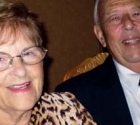 Thank You Eddie
Thank You Eddie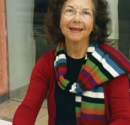 Save One Life, Save A World
Save One Life, Save A World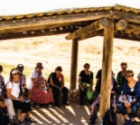 From Bible to Bedouins and Battles
From Bible to Bedouins and Battles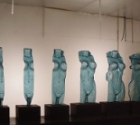 Trip to the Dead Sea
Trip to the Dead Sea Japan
Japan Brian Braude
Brian Braude